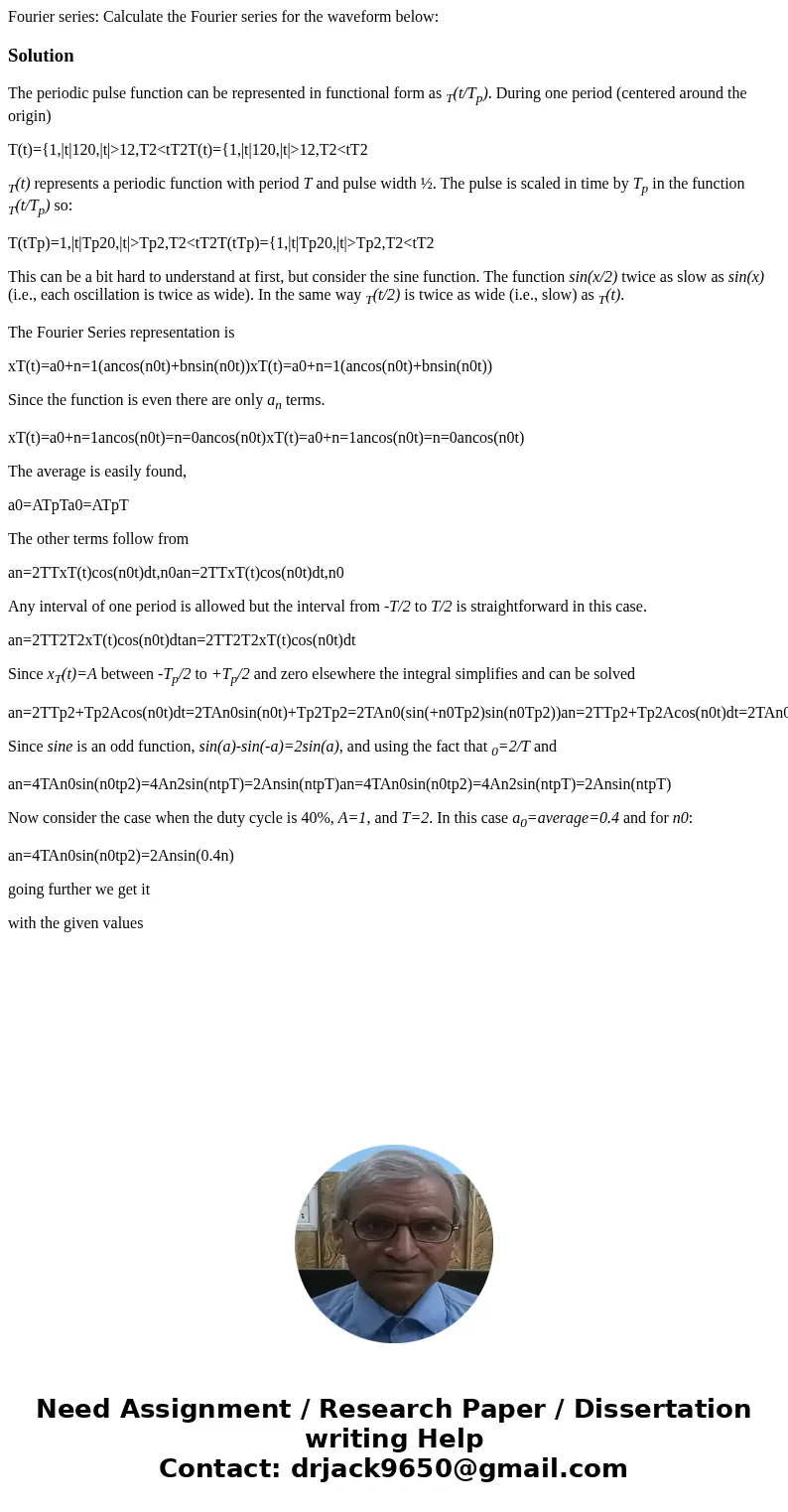Fourier series Calculate the Fourier series for the waveform
Solution
The periodic pulse function can be represented in functional form as T(t/Tp). During one period (centered around the origin)
T(t)={1,|t|120,|t|>12,T2<tT2T(t)={1,|t|120,|t|>12,T2<tT2
T(t) represents a periodic function with period T and pulse width ½. The pulse is scaled in time by Tp in the function T(t/Tp) so:
T(tTp)=1,|t|Tp20,|t|>Tp2,T2<tT2T(tTp)={1,|t|Tp20,|t|>Tp2,T2<tT2
This can be a bit hard to understand at first, but consider the sine function. The function sin(x/2) twice as slow as sin(x) (i.e., each oscillation is twice as wide). In the same way T(t/2) is twice as wide (i.e., slow) as T(t).
The Fourier Series representation is
xT(t)=a0+n=1(ancos(n0t)+bnsin(n0t))xT(t)=a0+n=1(ancos(n0t)+bnsin(n0t))
Since the function is even there are only an terms.
xT(t)=a0+n=1ancos(n0t)=n=0ancos(n0t)xT(t)=a0+n=1ancos(n0t)=n=0ancos(n0t)
The average is easily found,
a0=ATpTa0=ATpT
The other terms follow from
an=2TTxT(t)cos(n0t)dt,n0an=2TTxT(t)cos(n0t)dt,n0
Any interval of one period is allowed but the interval from -T/2 to T/2 is straightforward in this case.
an=2TT2T2xT(t)cos(n0t)dtan=2TT2T2xT(t)cos(n0t)dt
Since xT(t)=A between -Tp/2 to +Tp/2 and zero elsewhere the integral simplifies and can be solved
an=2TTp2+Tp2Acos(n0t)dt=2TAn0sin(n0t)+Tp2Tp2=2TAn0(sin(+n0Tp2)sin(n0Tp2))an=2TTp2+Tp2Acos(n0t)dt=2TAn0sin(n0t)|Tp2+Tp2=2TAn0(sin(+n0Tp2)sin(n0Tp2))
Since sine is an odd function, sin(a)-sin(-a)=2sin(a), and using the fact that 0=2/T and
an=4TAn0sin(n0tp2)=4An2sin(ntpT)=2Ansin(ntpT)an=4TAn0sin(n0tp2)=4An2sin(ntpT)=2Ansin(ntpT)
Now consider the case when the duty cycle is 40%, A=1, and T=2. In this case a0=average=0.4 and for n0:
an=4TAn0sin(n0tp2)=2Ansin(0.4n)
going further we get it
with the given values

 Homework Sourse
Homework Sourse